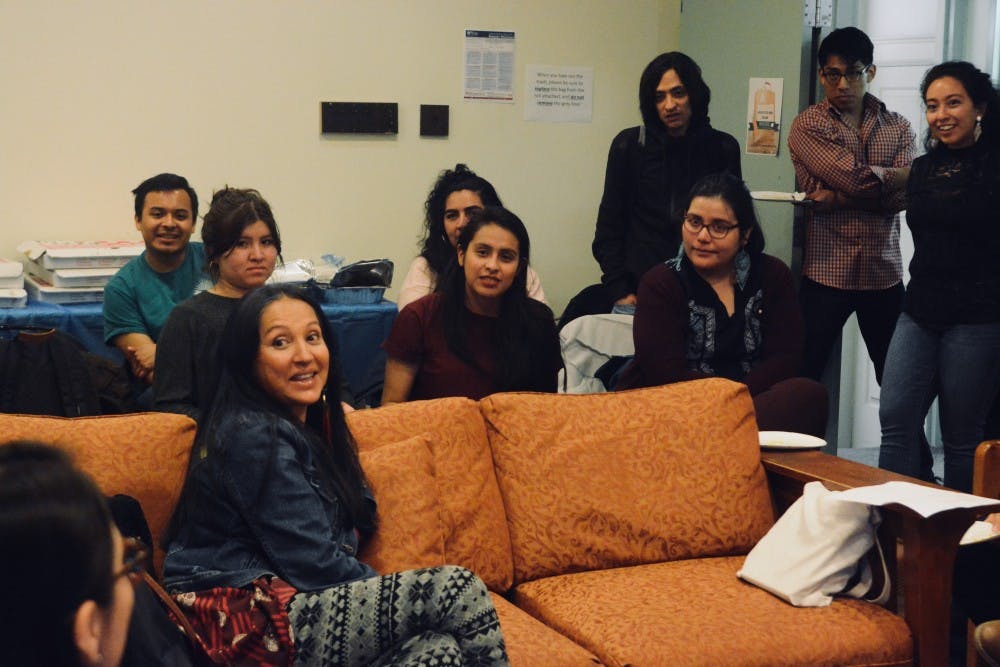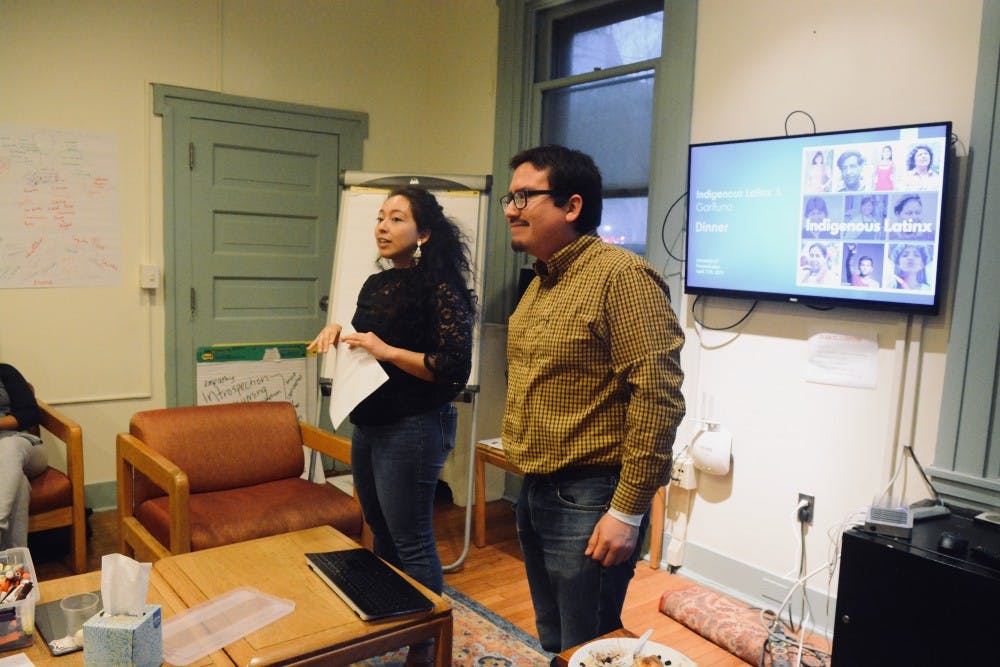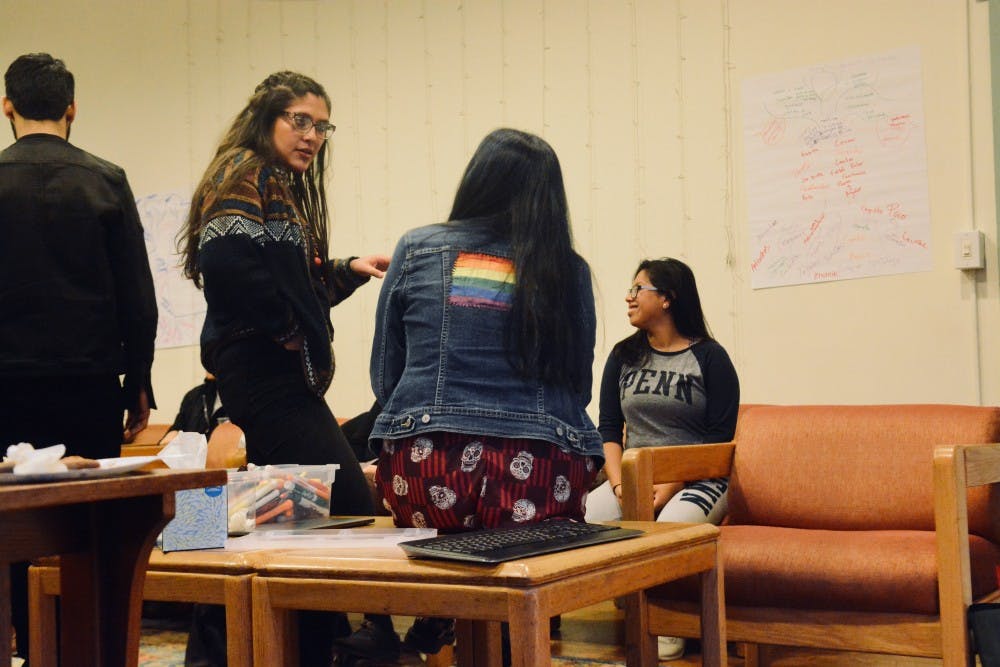
Attendees shared reflections on their backgrounds and traditions at the event.
Credit: Katharine CocherlStudents, faculty, and staff from across the Philadelphia region came together April 11 to share a meal and celebrate Indigenous and Latinx identity.
Attendees at the dinner, which was hosted at the Greenfield Intercultural Center, offered reflections on their backgrounds and traditions. First-year public health graduate student Laura Lagunez, one of the event's organizers, said the dinner was part of a larger effort to build community among Penn's Indigenous population.
“I have talked with students who are Indigenous but feel that they can’t claim their heritage," said Lagunez. “Being Indigenous and Latinx is different than just being Latinx, and many students ask themselves what is there to gain in proclaiming their Indigenous background.”
The attendees discussed what it means to have an Indigenous Latinx identity, which includes various groups across the Western Hemisphere, such as the Navajo of the Southwestern United States and the Quechua of Peru. People also spoke about the definition of Indigenous Latinx and shared stories about their family history.

Laura Lagunez (left) and Professor Américo Mendoza-Mori (right) emphasized the need for spaces to talk about Indigenous identity at Penn beyond traditional Latinx campus groups.
The event was organized by Professor Américo Mendoza-Mori, who teaches both Quechua and Spanish and designed Penn's Quechua Language Program. Mendoza-Mori worked with student groups such as Natives at Penn and Quechua at Penn to plan the event.
The dinner began with a short introduction from Mendoza-Mori and Lagunez. Both speakers emphasized the need for spaces to talk about Indigenous identity at Penn beyond traditional Latinx campus groups.
“We used to use 'Latino' or 'Hispanic' to identify people, and in recent years it has become 'Latinx' to better reflect the diversity of the community,” Mendoza-Mori said. “But somehow the words Latinx or Hispanic, just by their name, emphasize the European heritage.”
Lagunez also facilitated a “Tree of Life” activity where participants gathered in small groups and drew a tree that contained the most important aspects of group members' identities. They included characteristics such as place of origin, foods that remind them of home, and skills they have learned over time.

Professor Mendoza-Mori stated that it is important to both bring different cultural groups together but also allow each group to celebrate its own unique identity.
Mendoza-Mori stressed the importance of bringing different cultural groups together, but also allowing each group to celebrate its own identity.
“Universities are trying to become more diverse spaces, but this is a two-way bridge," Mendoza-Mori said. "The university can promote more channels and create spaces where communities can come together, but on the other hand, students need to also consider their identity and the value of their identity."
The Daily Pennsylvanian is an independent, student-run newspaper. Please consider making a donation to support the coverage that shapes the University. Your generosity ensures a future of strong journalism at Penn.
Donate







